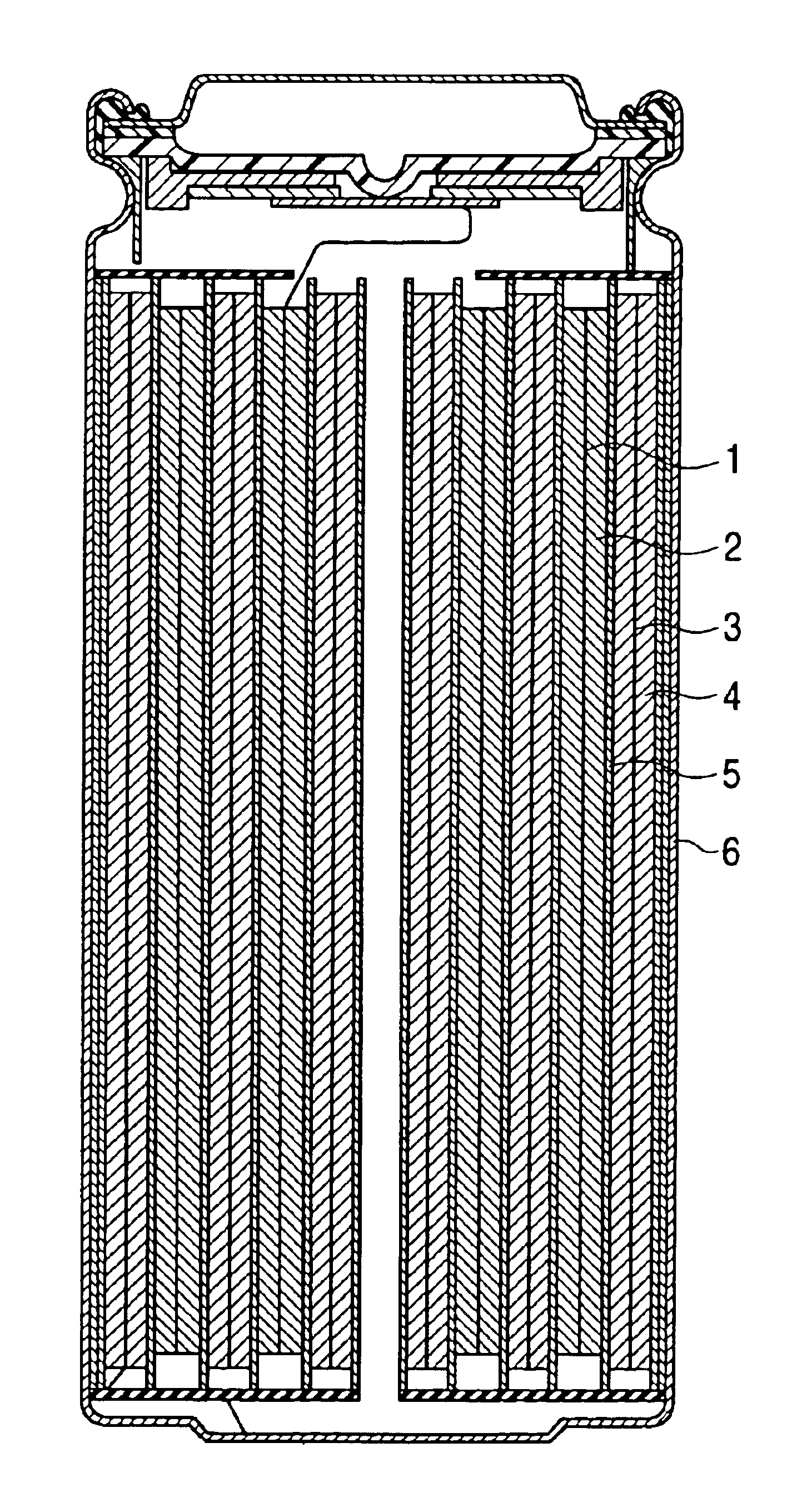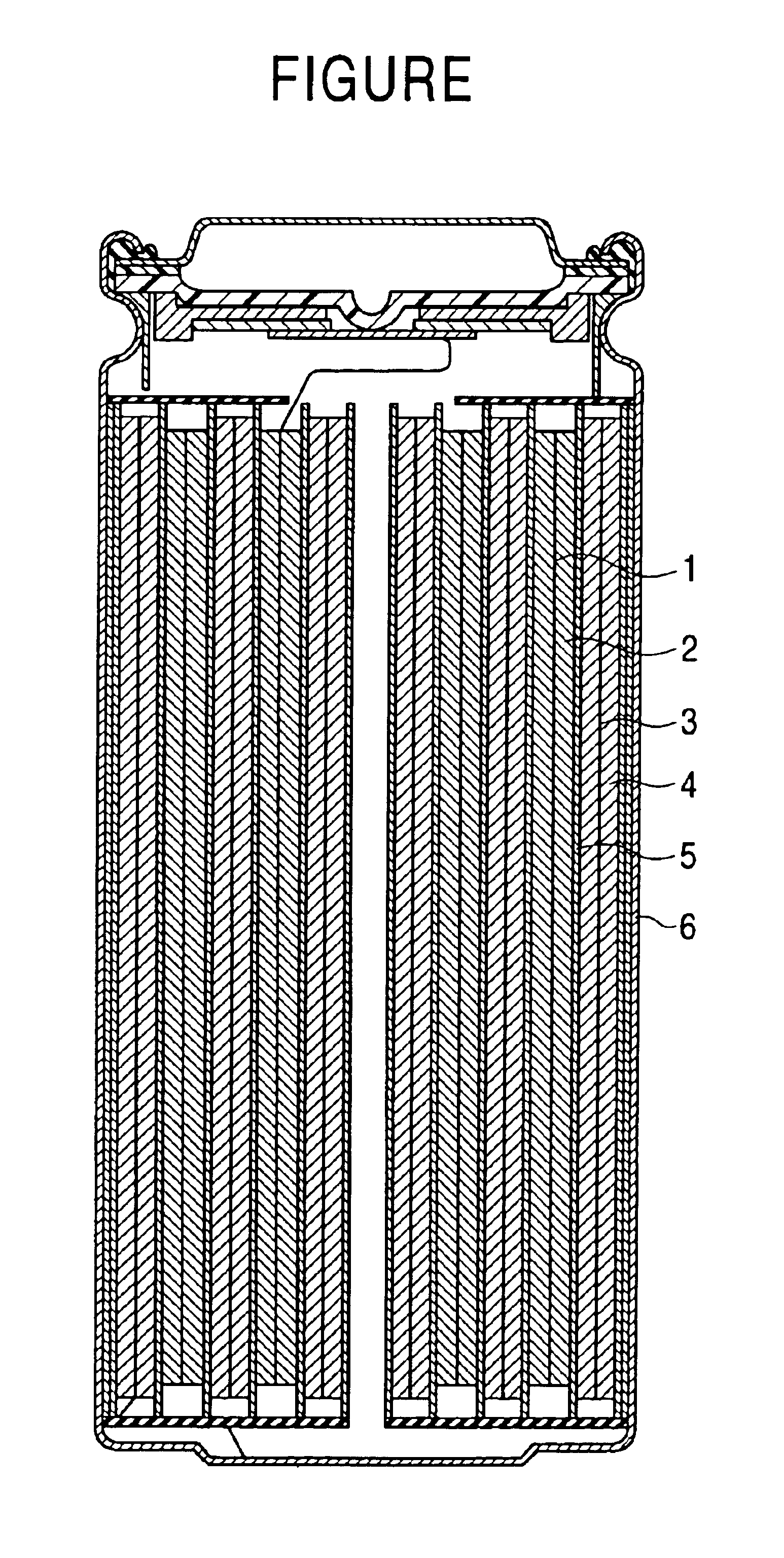Nonaqueous electrolyte secondary battery
a secondary battery and electrolyte technology, applied in the direction of non-aqueous electrolyte cells, cell components, sustainable manufacturing/processing, etc., can solve the problems of short circuit inside the battery, low discharge potential of batteries, and failure to obtain the desired energy density
- Summary
- Abstract
- Description
- Claims
- Application Information
AI Technical Summary
Benefits of technology
Problems solved by technology
Method used
Image
Examples
examples
[0090]The present invention is described below by way of examples. A plurality of lithium-ion secondary batteries were prepared as the examples and as the comparative examples of the nonaqueous electrolyte secondary batteries.
experiment 1
[0091]In Experiment 1, liquid nonaqueous electrolytes containing various types of organic compounds were prepared to examine the differences in battery characteristics according to the types of the organic compounds added.
example 1
Preparation of Negative Electrode
[0092]A graphitized-material powder was prepared as a negative electrode active material.
[0093]First, 30 parts by weight of a coal-tar-based pitch as a binder was added to 100 parts by weight of a coal-based coke as a filler. After mixing at a temperature of approximately 100° C., the mixture was press-formed using a press so as to make a precursor of a molded carbonaceous material. The resulting precursor was then thermally-treated at a temperature of 1,000° C. or less to form a molded carbonaceous material.
[0094]The molded carbonaceous material was impregnated with a melt of binder pitch at a temperature of 200° C. or less and was then thermally treated at a temperature of 1,000° C. or less. This pitch-impregnation / baking process is repeated several times. Subsequently, the molded carbonaceous material was thermally treated in an inert atmosphere at a temperature of 2,800° C. so as to form a molded graphitized material. The molded graphitized mater...
PUM
| Property | Measurement | Unit |
|---|---|---|
| interplanar distance | aaaaa | aaaaa |
| density | aaaaa | aaaaa |
| volume mean particle diameter | aaaaa | aaaaa |
Abstract
Description
Claims
Application Information
 Login to View More
Login to View More - R&D
- Intellectual Property
- Life Sciences
- Materials
- Tech Scout
- Unparalleled Data Quality
- Higher Quality Content
- 60% Fewer Hallucinations
Browse by: Latest US Patents, China's latest patents, Technical Efficacy Thesaurus, Application Domain, Technology Topic, Popular Technical Reports.
© 2025 PatSnap. All rights reserved.Legal|Privacy policy|Modern Slavery Act Transparency Statement|Sitemap|About US| Contact US: help@patsnap.com



